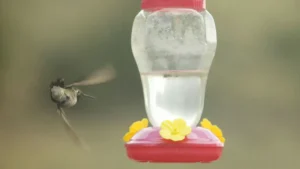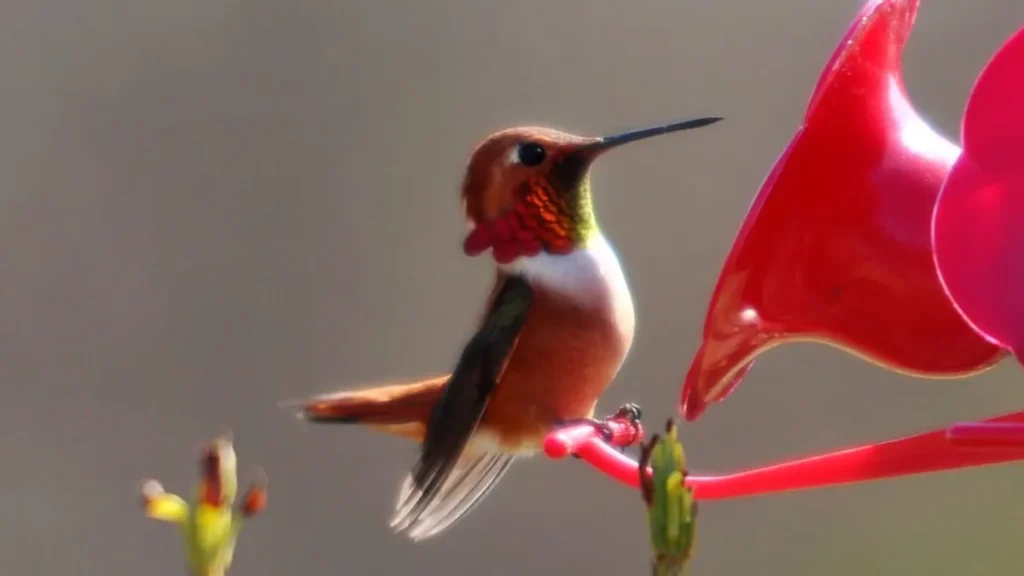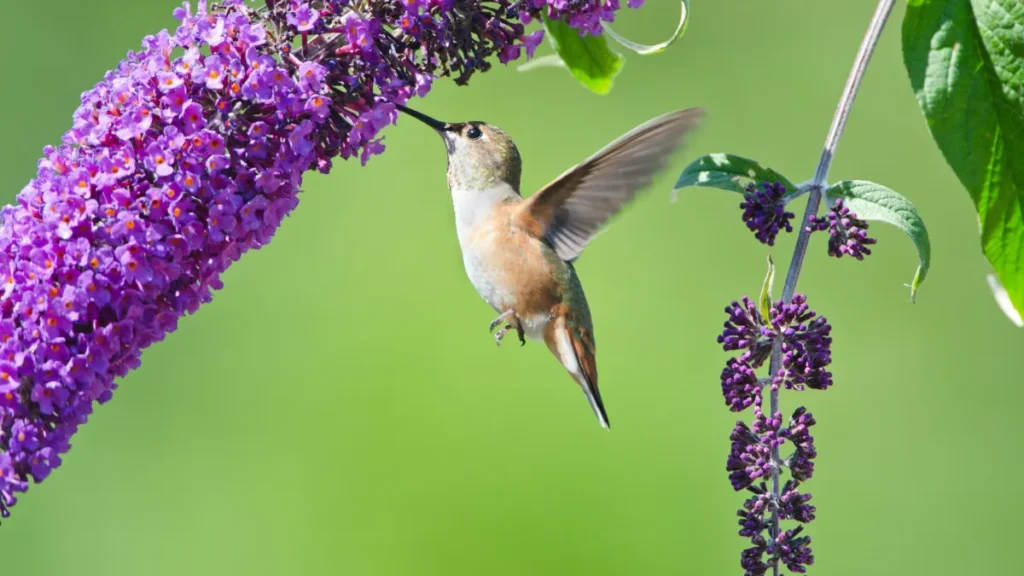How Often Should You Change Hummingbird Nectar in the Summer?
Summer in the U.S. is a great time to watch hummingbirds flutter around your garden. These tiny birds bring energy and color to your backyard. But during hot months, there’s an important thing to keep in mind: keeping the nectar in your hummingbird feeder fresh and clean.
If you don’t change the nectar often, it can spoil. Hot weather speeds up fermentation and encourages mold and bacteria to grow, which can make the nectar unsafe. That’s why you need to stay on top of cleaning and refilling your feeder.
Why Nectar Spoils Quickly in Summer
In summer, when temperatures are above 70°F, nectar can spoil in just a day or two. The sugary water is the perfect place for bacteria, yeast, and mold to grow—especially when the feeder is in direct sunlight. Warmth and moisture speed up spoilage, and even bird saliva, insects, and outside air can add germs to the mix.
If nectar goes bad, it can make hummingbirds sick. Mold and bacteria may cause infections in the birds’ mouths and throats, making it hard or impossible for them to eat. Some illnesses, like Aspergillosis or Salmonella, can even be deadly. Dirty feeders can also spread viruses like Avian Pox, especially if birds share the same feeding ports.
So how often should you change the nectar?
- In hot weather (above 70°F): every 1–2 days
- In cooler weather: every 3–5 days
And if the nectar looks cloudy or you see mold, change it right away.
How to Clean Your Hummingbird Feeder
Regular cleaning is just as important as changing the nectar. Here’s a simple guide to follow:
How Often:
- Clean the feeder every time you change the nectar
- Do a deeper cleaning at least once a week
What You’ll Need:
- Hot water
- Mild dish soap
- Bottle brush or pipe cleaners
- Paper towels or clean cloth
- White vinegar or unscented bleach (optional)
Cleaning Steps:
- Empty out any old nectar—never just top it off.
- Take apart the feeder and rinse all pieces under hot water.
- Wash with hot, soapy water and scrub well with brushes.
- Rinse again under hot water to remove all soap.
- For disinfecting:
- Bleach method: Mix 1 part bleach to 9 parts water. Soak parts for 10–15 minutes, then rinse well.
- Vinegar method: Mix 1 part white vinegar to 4 parts water. Soak for 30–60 minutes, then rinse well.
- Let all parts air dry completely before refilling with fresh nectar.
Never use harsh chemicals or scrubbers that can scratch the feeder. Scratches can trap bacteria and make future cleanings harder.
What Cloudy Nectar Means
If your nectar turns cloudy, that’s a clear sign it has gone bad. Cloudiness is caused by bacteria or yeast and means the nectar is no longer safe. Spoiled nectar can harm hummingbirds, reduce their interest in feeding, and take away the nutrients they need. If you notice cloudy nectar:
- Dump it out immediately.
- Clean the feeder thoroughly.
- Refill with fresh nectar.
To help prevent this, place your feeder in the shade and only fill it with as much nectar as the birds can finish in a day or two.
Nectar Recipe (and What to Avoid)
Here’s the safest recipe for hummingbird nectar:
Recipe:
- 1 part plain white sugar
- 4 parts water
Heat the mixture in a saucepan and stir until sugar dissolves. No need to boil, but warming it helps sterilize the solution. Let it cool to room temperature before pouring into the feeder. Store any leftover nectar in the fridge for up to one week. Always bring it to room temp before using.
What Not to Use:
- No honey – it grows harmful fungus.
- No artificial sweeteners – birds need real sugar for energy.
- No brown, raw, or powdered sugar – these can contain harmful additives like iron or cornstarch.
- No fruit juice or sodas – wrong sugar type and they spoil fast.
Avoid Red Dye
Although hummingbirds love red, never add red dye or food coloring to the nectar. Most feeders already have red parts to attract the birds. The dye adds no benefit and may be harmful. Studies on red dye (like Red Dye #40) show possible links to cancer and organ stress in animals. Hummingbirds are small, so even small amounts could be risky.
Keep it natural and safe—use clear nectar.
Storing Nectar
To store extra nectar:
- Use a clean, airtight container (glass or food-safe plastic).
- Label it with the date.
- Keep it in the fridge and use it within one week.
- If it gets cloudy or smells bad, throw it out right away.
FAQs
1. Can I change the nectar less often if my feeder is in the shade?
You might be able to stretch to every 2 days in the shade, but always check for cloudiness or mold. When in doubt, change it.
2. Do I need to boil the nectar?
Boiling isn’t required, but heating the water helps dissolve sugar and slightly sterilizes the mix. Just make sure it’s completely cool before using.
3. Is it okay to leave the feeder out overnight?
Yes, but in very hot climates or if insects are an issue, you may want to take it in overnight and put it out again in the morning.
4. How do I know if hummingbirds have gotten sick from my feeder?
You might see birds with swollen tongues, difficulty feeding, or unusual behavior. If this happens, remove the feeder immediately, clean it thoroughly, and give fresh nectar.



